6 Overlooked Asters for Tough Spots
http://decor-ideas.org 09/05/2014 23:13 Decor Ideas
Asters are one of the most diverse groups of flowering plants out there, and how I love planting underutilized native asters. With shrinking pollinator numbers and habitat loss, it’s more important than ever to plant natives. And the late summer-fall blooming season of native asters supports insects at a critical time — when they are getting ready to migrate long distances, overwinter and feed their emerging young. Certain species of native bees forage only on asters, with the pollen from a single species supporting bee larvae in the nest.
The following asters will feed wildlife and make late summer and autumn the top flowering time for your garden.
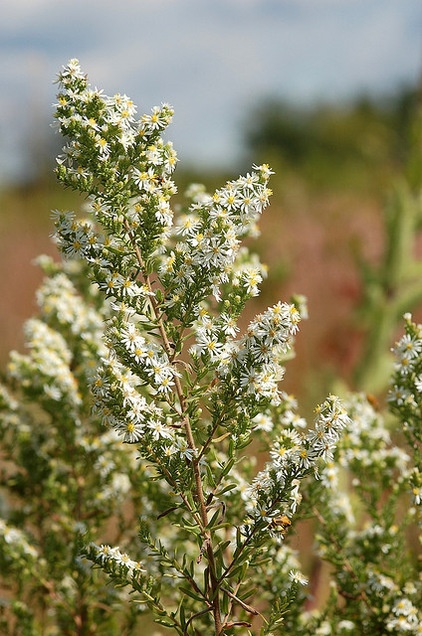
Heath Aster
(Symphyotrichum ericoides)
Native to much of North America, from the Southwest and Texas through the Great Plains and east to Maine
With its small leaves and thick spikes of small flowers that bloom in early fall, this plant looks almost as if is covered in snow. It grows to 2 feet tall and about 1 to 2 feet wide. Heath aster prefers medium to dry soil and full sun to partial shade. It’s one of the toughest asters you’ll find. Some consider it weedy because of its penchant to spread by rhizomes and self-sow easily in open and disturbed soil, but I haven’t had problems in my thickly planted garden over the years. The silvery checkerspot butterfly uses heath aster as a host plant.
Photo by Ben Lowe
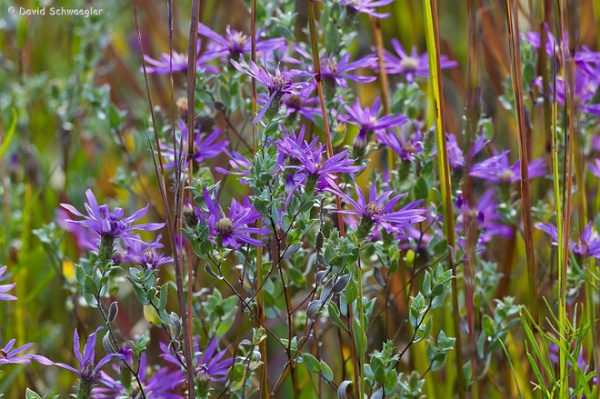
Silky Aster
(Symphyotrichum sericeum)
Native to the central, eastern and northern Great Plains
Silky aster is distinct-looking, with 1-inch-wide blooms and leaves covered in fine hairs that give it a soft feel and silvery appearance. It stands about 12 to 18 inches tall and wide and prefers full sun and well-drained soil; rocky or sandy soil is perfect. Since many asters have large geographic ranges, it’s hard to say when they will bloom for you. Silky will sport flowers in September toward the north and October in the South. Try to find plants with genetic origins in your area; otherwise the bloom period might be off for native insects whose annual feeding is timed to the plants.
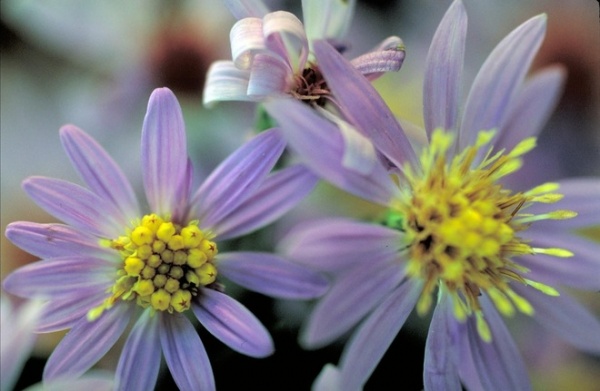
Short’s Aster
(Symphyotrichum shortii)
Native mostly in the Midwest, from Wisconsin to Alabama and into Pennsylvania
Short’s aster is great for a woodland garden with indirect sun, a small meadow area or the east side of a house. It likes medium to dry soil with some organic matter — conditions you would find in a shadier area in the wild. At 2 to 3 feet tall, the flower stalks have a proliferation of large blooms that tend to make the plant flop a bit; place it among grasses such as bluestem for support. The pearl crescent butterfly and several moth species use it and other asters as a host plant. Short’s blooms between August and October.
Photo by Dr. Thomas G. Barnes
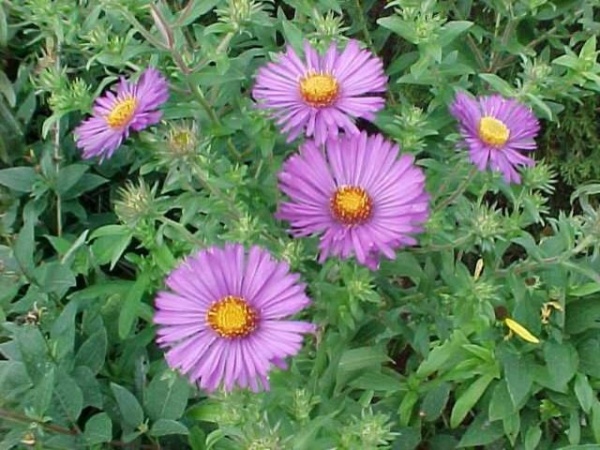
Swamp Aster
(Symphyotrichum puniceus)
Native in the northern Plains, the Midwest, New England and Appalachia
At 3 to 6 feet tall, and a lover of moist or even boggy conditions in full sun, this is the perfect aster for a large rain garden or at a pond’s edge. It even prefers sticky clay soil. Swamp aster will bloom for several weeks between August and October. A few species of native mining bees collect pollen for their young on only this aster.
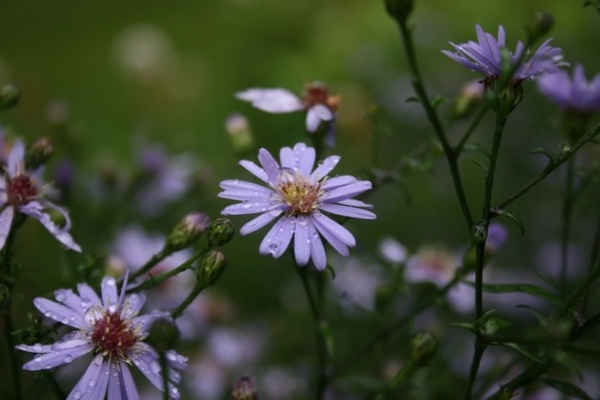
Blue Wood Aster
(Symphyotrichum cordifolium)
Native from Minnesota to Arkansas and east into New England
This beauty’s small blue flowers turn white as they fade over at least a month from September to October. Blue wood loves partial sun to partial shade; more sun means wetter soil. At about 2 to 3 feet tall, blue wood, or heart-leaved, aster is generally adaptable from a slightly wet to slight dry soil.
Photo by Sten Porse
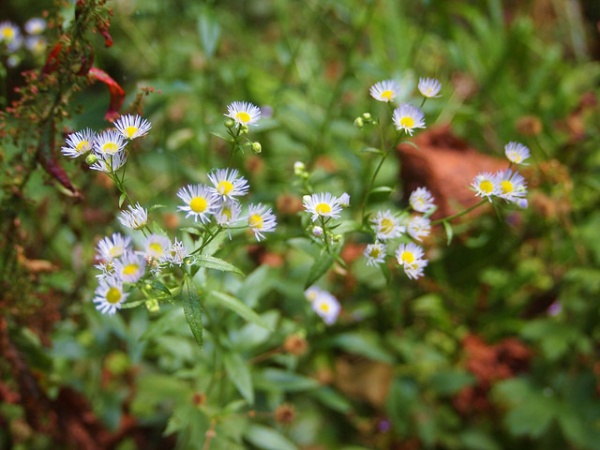
Pacific Aster
(Symphyotrichum chilense)
Native to California, Oregon and Washington
For gardeners in the West, this aster blooms from midsummer to early fall, starting out lavender blue and turning white. It can take many shapes — slightly sprawly to gangly to shrubby — depending on conditions, and reaches 1 to 3 feet in height. Pacific, or California, aster is adaptable, growing in coastal bluffs, in salt marshes, on slopes and in clearings in dry to moist soil. It spreads by rhizomes, so give it room to meander among grasses or other perennials.
Photo by J. Maughn
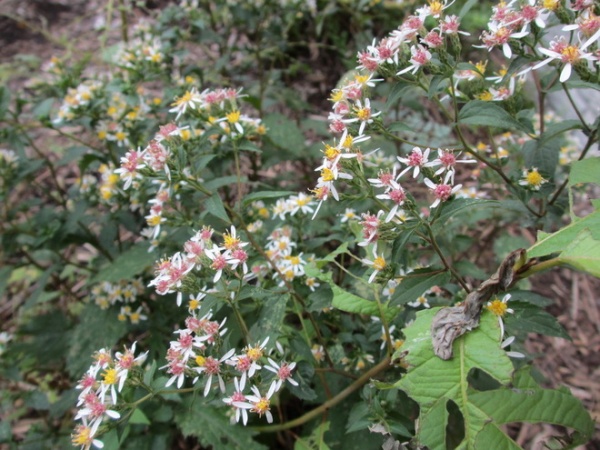
Calico Aster
(Symphyotrichum lateriflorum)
Native from Minnesota to eastern Texas and all points east.
I’ve probably saved my favorite underutilized aster for last. At about 2 to 3 feet tall and 2 feet wide, calico is doing great for me in semi-dry clay in full shade. Its flowers are small but last many weeks in early to mid-fall. The neat thing about the flowers is that they bloom on only one side of the stems. And pollinators love them. Make sure it has consistent moisture if you place it in full sun. I’d suggest massing this delicate-looking plant.
Did you find any new asters you’re willing to try? Find Native Plants can help you find specialty native plant nurseries near you.
More:
What to do in your garden this month
More fall gardening guides
Related Articles Recommended












